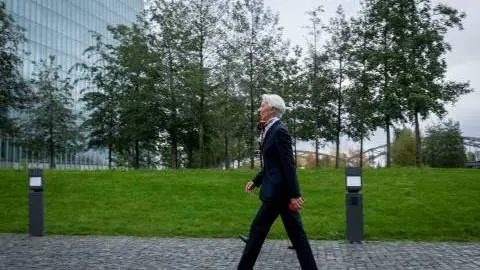ECB minutes: ‘Financing conditions’ are the new ‘uncertainty’
The just-released minutes of the ECB’s January meeting confirm the ECB’s current preferred stance: maintain favourable financing conditions for as long as possible
Financing conditions: the new ECB buzzwords
Some months ago, a keyword in ECB minutes was “uncertainty”. In the minutes of the January meeting, ‘financing conditions’ has become the new ‘uncertainty’. We counted 25 mentions of this phrase, confirming what the ECB’s preferred target is in the coming months.
Here are some other highlights from the minutes:
- “Looking beyond the first quarter, there were reasons for cautious optimism about the prospect of a recovery in the course of 2021.” The ECB stays optimistic but pointed out potential risks of a softer and delayed recovery on the back of slow vaccination progress.
- Will higher savings translate into high pent-up demand? One of the big questions for all forecasts these days. In theory, the strong increase in household savings could lead to a significant spur in private consumption once economies reopen. However, as the ECB points out “younger households were drawing more on their savings as their financial situation deteriorated, while older households were more able to save”. This could add to a more uneven recovery.
- As for inflation, the minutes provided more information than the press conference, pointing to a range of technical factors potentially pushing up headline inflation. However, the minutes said that that temporary inflation increases should not be taken as a sustainable increase.
- With regard to the ECB’s newest target, financing conditions, the minutes confirm the still supportive and favourable financing conditions. “Nonetheless, it was important to monitor the recent increase in nominal risk-free rates, which could be attributed to the spillover from the more substantial increase in US yields. Looking ahead, assessing the impact of upward pressure on nominal yields on the favourability of financing conditions would be an important task in the context of future updates to the inflation outlook.”
- Finally, the standard sentence that “all instruments needed to remain on the table” in our view illustrates the ECB’s willingness to do more if needed.
The return of inflation and how to deal with it
The return of inflation should continue to be a hot topic for financial markets but also the ECB. Headline inflation should be pushed up in the coming months, mainly by a series of one-off factors. While in the short run, the base effect from higher energy prices should push up headline inflation, a reversal of deflationary trends in the sectors hit the most by the lockdowns once economies reopen will insert additional upward pressure. In the second half of the year, the full impact from the reversal of the German VAT reduction should be reflected in YoY inflation rates. Last but not least, changes in the underlying consumer goods basket and expenditure patterns will make year-on-year comparisons even more complicated.
An increase in headline inflation on the back of technical factors is the worst scenario for the ECB
As for inflation this year, there are currently at least three certainties: the only way is up; for the first time in years, the ECB’s inflation forecasts will turn out to be too low, rather than too high; and interpreting these inflation numbers will highly complicated due to too many technical and one-off factors. Also, an increase in headline inflation on the back of technical factors is the worst scenario for the ECB. On the one hand, it could lead to financial markets pricing in higher inflation expectations and possibly even a policy reaction, while on the other hand, this inflation reduces purchasing power and will be undermining if not denting the economic recovery.
This complicated inflation story explains why the ECB has shifted its narrative away from ‘returning inflation to target’ to ‘maintaining favourable financing conditions. The latter obviously gives the ECB enormous flexibility to react to higher bond yields, a higher exchange rate or other unwarranted developments, even if headline inflation stands above 2%. In our view, the ECB’s preferred option is still to stay on hold for the rest of the year but the minutes of the January meeting suggest that it is clearly determined to do more if needed.
This publication has been prepared by ING solely for information purposes irrespective of a particular user's means, financial situation or investment objectives. The information does not constitute investment recommendation, and nor is it investment, legal or tax advice or an offer or solicitation to purchase or sell any financial instrument. Read more
Download
Download article
18 February 2021
How green was my credit? This bundle contains 7 Articles